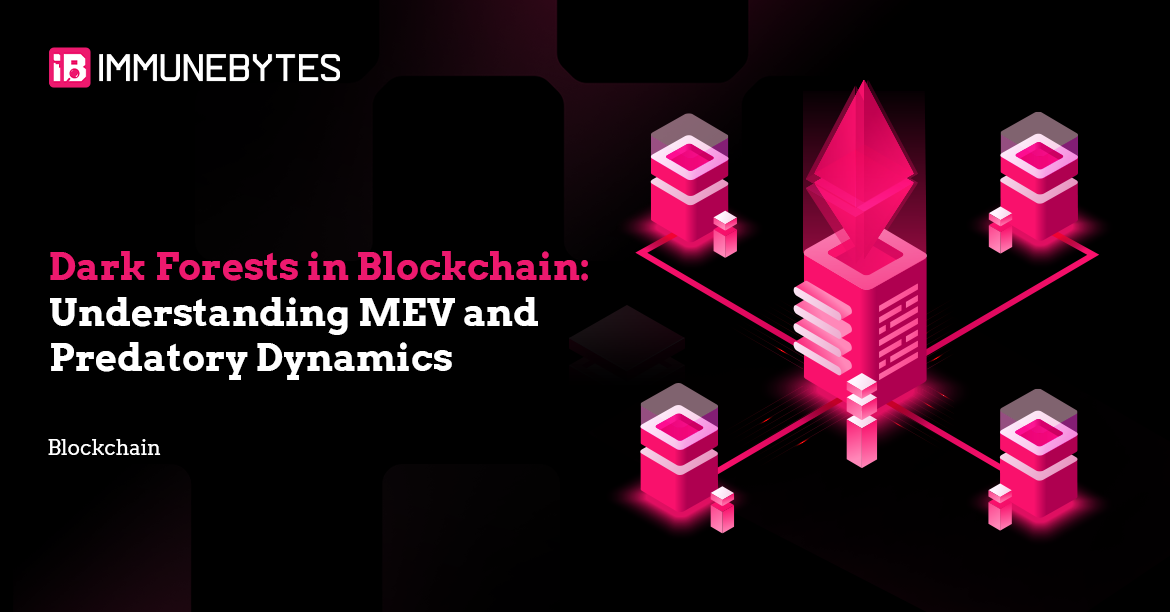Every transaction Alice (the infamous victim of SWE’s mistakes) broadcasts is both a potential opportunity and a risk. Ethereum’s mempool, famously termed a “Dark Forest” by researchers Dan Robinson and Georgios Konstantopoulos, is an open hunting ground where bots continuously scan for profit-making opportunities. This article explains exactly why that matters, how predatory actors exploit it, and how blockchain participants (auditors, developers, researchers, traders) can navigate and mitigate these threats.
What exactly is the “Dark Forest”?
Ethereum’s mempool is public, meaning every transaction is openly visible while pending. Ironically, this transparency creates a hostile environment, like shining a flashlight in a dark forest, where predators (MEV bots, front-runners, arbitrageurs) can instantly detect and exploit profitable transactions.
Predators in the Dark Forest:
The different kinds of attacks, which are not so much attacks but generally abuse of information upper hand, are titled based on the occurrence and the profitability of those who perform them. We have the easiest ones at first, that is, the generalized front-runners, as the name suggests, they basically copy profitable transactions instantly. We have the universal profiters as the DEX Arbitrage Bots, who earn their profit on the same basis as arbitrageurs have done since the inception of exchanges by exploiting price differences across decentralized exchanges. Then, there are some of the most savvy ones, who make sandwich attacks by inflating the trade costs as they cleverly trade before and after the victim’s transactions. Finally, the Liquidation & Sniper Bots are infamous for quickly capitalizing on time-sensitive events (e.g., NFT mints, loan liquidations).
MEV in Simple Terms:
MEV is the value that bots or validators can extract by carefully ordering, censoring, or inserting transactions into a block. Why Should You Care?
- Silent Theft: Small extractions from your trades add up significantly.
- Invisible Tax: Bots raise your transaction costs without your knowledge.
- Unfair Market: Creates hidden advantages, eroding trust and market fairness.
Game-Theoretic Insight:
In Ethereum’s mempool, the agents involved, the transaction broadcasters (users), the predatory bots, and the validators, engage in continuous strategic interactions. Each transaction becomes a strategic move: openly revealing intent or economic value creates vulnerability, as predators instantly gain perfect information about potential gains. This dynamic strongly favors bots that constantly monitor pending transactions, ready to respond within milliseconds.
When a user submits a profitable transaction openly, they effectively surrender strategic advantage, like revealing their cards prematurely in a poker game. Bots, exploiting their rapid computational power, instantly replicate or manipulate these transactions, ensuring they capture the profit first. Validators, in their critical role, become gatekeepers who ultimately control transaction ordering. They have the power to include, exclude, or reorder transactions, effectively shaping outcomes. As MEV (Maximal Extractable Value) profits grow, the incentives for validators to collude with bots or even become predatory themselves increase, complicating the game’s strategic landscape further.
Real Cases, Real Lessons:
- Uniswap Liquidity Rescue:
Researchers privately coordinated a hidden transaction with miners, saving trapped funds from predators.
Lesson: Always conceal profitable or sensitive transactions via private channels. - Lien Protocol Rescue:
Security researcher Samczsun secretly worked with validators to fix a vulnerability privately, preventing a catastrophic theft.
Lesson: Public disclosure too early triggers predatory attacks. Coordinating privately prevents exploitation. - $25M MEV Predator Trap:
Malicious validators tricked MEV bots into losing millions by exploiting their transaction-ordering dependency.
Lesson: Validators themselves can become predators, design systems carefully with validator-level adversaries in mind.
What You Should Worry About More Than You Do:
- Silent Losses: Small but frequent bot extraction drains more funds than big headline hacks.
- Validator Collusion: As MEV becomes profitable, validator corruption or manipulation can devastate trust.
- User Cynicism: Constant predation may drive ordinary users away, harming broader blockchain adoption.
How to Stay Safe in the Dark Forest:
Navigating blockchain’s dark forest requires strategic forethought and deliberate defensive measures from protocol developers, auditors, and security researchers alike.
- At the forefront of these strategies is utilizing private transaction submission methods. Users and developers can bypass the hostile visibility of public mempools by sending transactions directly through private relays such as Flashbots RPC. These private channels hide transactions from predatory bots, eliminating their informational advantage. By remaining invisible until inclusion in a block, private transactions neutralize bots’ primary strategic edge, their instantaneous reaction capability.
- A robust strategy involves employing commit-reveal mechanisms for transaction execution. Here, the intent of the transaction is cryptographically hidden (committed) at submission, and only revealed after it’s securely included in the blockchain. Bots, deprived of critical transaction details at submission time, lose their ability to effectively front-run or sandwich, thereby significantly increasing the transaction’s security.
- Protocol designers can further neutralize predation by utilizing batch or randomized auctions. Rather than sequentially executing transactions based on the precise order in which they enter the mempool, batch auctions group trades together within a predefined time window, executing them collectively at a fair, uniform clearing price. Randomizing transaction ordering within blocks similarly frustrates predatory bots by removing predictability, ensuring that high-speed reaction or gas-price bidding wars become ineffective or too costly to sustain.
- Another proactive defensive and relatively newer mechanism is internalizing MEV within the protocol itself. By identifying and executing profitable arbitrage opportunities internally, the protocol captures the extracted value, which can then be redistributed to users or utilized for network incentives, effectively removing the incentive for external predation. This approach fundamentally shifts the economic equilibrium; if the protocol absorbs the MEV, external bots lose motivation and profitability, diminishing the overall predatory threat.
Final Thought:
The blockchain dark forest isn’t a temporary issue; it’s a permanent dynamic that demands strategic thinking. Recognizing that every open system is an adversarial ecosystem is step one. Designing mechanisms, systems, and transactions with this in mind is critical for the survival and growth of decentralized economies.
